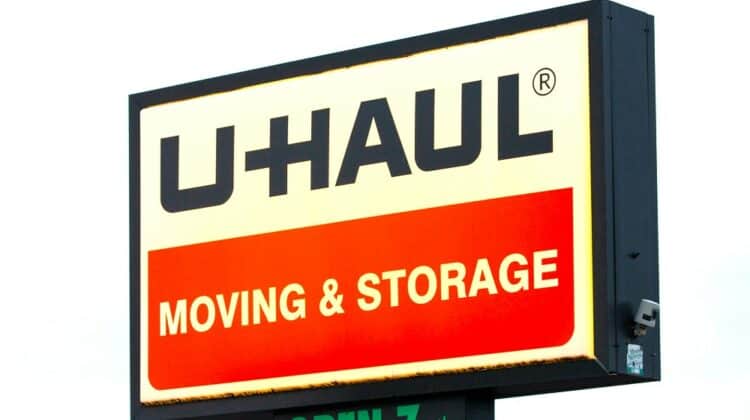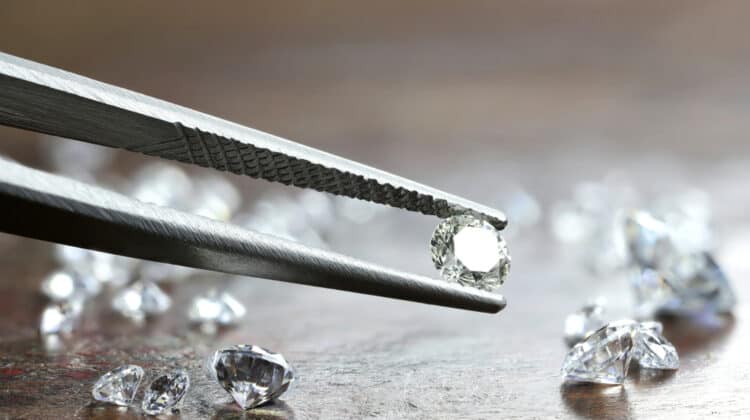
Cedar is a type of wood that both architects and designers love to use.
It has several properties that make it ideal for structural usage, too.
One of the things that cedar is best known for is its color and appearance.
If you planned on making a project out of cedar, then you may have felt surprised when you saw the price tag for a stack of cedar.
Here are 10 reasons cedar is so expensive.
Why Is Cedar So Expensive? (Top 10 Reasons)
1. Moisture Resistance

One of the reasons cedar is expensive is that it’s prized for its moisture resistance.
This means that it’s harder for the wood to absorb water into its fibers.
As a result, it’s less prone to rot and decay.
A problem that many builders and designers have is the fact that wood doesn’t like water.
Since wood is often used in the building of homes, decks, and other projects, it’s only a matter of time before the wood comes into contact with water.
When it does, the consequences could be expensive.
Water weakens wood.
It makes it soft which means, that if the wood is under any kind of pressure, then it can start to buckle.
If everything around it buckles, too, then the structure collapses.
Another problem that water exposure brings is rot.
In most cases, black mold will grow on the wood since it likes to eat wet wood the most.
The problem with black mold is that it spreads quickly.
It can become very expensive to get rid of and fix.
In most cases, homeowners and builders have to replace the wood entirely.
That’s why many prefer to work with cedar.
Since it repels water naturally, it’s a lot more difficult for black mold to grow on it.
It also means that it’s less likely to buckle after exposure to water than other types of wood.
Since it’s prized for this attribute, it means many people are trying to get their hands on it.
Whether it’s for support in their house or to make a deck near a pool, the demand for cedar due to its moisture resistance is high.
Since supply is often low, the increase in demand makes cedar expensive.
Cedar is expensive because it’s moisture resistant.
2. Decay Resistant

Another reason that cedar is expensive is that it’s decay resistant.
It takes considerably more time and effort for cedar to start decaying.
There are several types of wood that don’t share this feature.
Wood can decay for many reasons.
One of the most common is water exposure.
Since cedar is resistant to both water and decay, it tends to last for a long time.
Another major source of decay is soil or contact with the ground.
When wood touches the ground, it’s subject to several different catalysts for decay.
The first is water that has soaked into the ground.
Any time it rains, it soaks into the soil and comes in contact with the wood for a long time.
Since it takes a while for the soil to dry out, the wood is constantly in contact with water.
Most types of wood start to decay as a result, but cedar doesn’t.
Another source of decay is the soil itself.
If you have especially acidic soil, that might start to make the wood decay, too.
That’s because the acid in the soil is also eating away at the wood that it’s in contact with.
Since cedar is resistant to decay, it has a better chance of surviving such an attack.
Finally, mold is also in the ground.
It can creep towards the wood and infest it.
Mold spreads fast thanks to its dispersion of spores.
It can spread through the wood until it’s covered with mold and decaying from it.
Since cedar is resistant, it’s less likely to let mold get a hold on it.
Since it’s resistant to decay, cedar is highly prized.
It lasts longer, which makes it ideal for most people.
Unfortunately, this also means that the price of it is higher.
Its durability due to decay resistance and its increase in demand drives up the price of cedar.
Cedar is expensive because it’s resistant to decay.
3. Insect Repellent

A problem that many types of wood face are insects.
That isn’t the case with cedar.
One of the reasons it’s expensive is that it’s basically an insect repellent.
Cedar has a unique ability to ward off bugs.
At the very least, it isn’t appetizing for bugs.
That’s important for builders and homeowners who want to use cedar to make a deck or anything else that provides support.
Bugs can wreak havoc on wood.
Certain bugs like termites, wood ants, and even wood wasps, will eat and burrow into the wood.
This causes the wood to become brittle and weak.
If too much weight is on the wood, then it can buckle and fall apart.
That’s one reason it’s important to keep termites and other wood-loving pests out of the house.
If the infestation continues, then it could damage your entire house.
It becomes a problem for decks and porches, too.
If the bugs infest the wood, then standing on the deck or porch could cause it to collapse and cause some serious injuries.
That’s why cedar wood is often preferred among builders and homeowners.
Since it isn’t appetizing for bugs, they tend to avoid it.
You’re able to have a higher chance of enjoying your deck, porch, or home without worrying about termites and other bugs slowly damaging it.
However, that also means that a lot of people want to get their hands on cedar.
Since cedar is one of the best types of wood for outdoor projects, it means that the demand for it is higher.
With only a certain supply provided each year, only so many people will be able to buy cedar.
That means the price increases to lower the demand for the product.
Cedar is expensive because of its insect repellent properties.
4. Lightweight

If you’ve never carried a standard plank of lumber before, then you may be surprised by how heavy it is.
If you’re building a project, then carrying those heavy pieces of lumber will start to take its toll.
The problem becomes even worse when you have to lift the wood to high places.
That’s why many builders and amateur builders prefer to work with cedar.
It’s lightweight.
Because cedar is lighter than other types of wood, it makes it easier to work with.
It’s especially popular with amateur builders and homeowners building a project because it means they don’t need to rent or buy equipment to move the lumber around.
It’s light enough to carry around.
That makes it an attractive choice for a lot of people.
Due to its ease and versatility, there’s a lot of demand for cedar.
Since there’s high demand, it means there’s less cedar to go around for everyone.
As a result, the price of cedar increases.
Cedar is expensive because of its lightweight nature, which makes it easier to carry around and work with.
5. Beauty

Perhaps one of the biggest reasons everyone loves to use cedar is its beauty.
Cedar comes in several shades, however, one of the best variants of cedar is Western Red Cedar.
This type of cedar comes in even more shades that aren’t typical of most types of wood.
You can get some red hues that are striking and make for great fences, walls, decks, and other projects without even needing paint.
That said, cedar as a whole comes in different shades of color on its own.
Whether someone wants a rustic-looking piece of wood or some modern-looking pieces of wood, they can find what they need with cedar.
Unfortunately, its beauty also makes it expensive for a few different reasons.
The first is that its different shades make it more versatile.
Designers can do a lot more with it, which means they want to get their hands on it.
Architects, builders, and homeowners also value its beauty and versatility.
They want to get their hands on it, too.
With the demand for wood as high as it is, it becomes very expensive.
Another reason is the fact that those selling the wood know how beautiful it is.
They’re aware that only cedar gives a particular type of appearance.
There aren’t any other pieces or types of wood that can match it.
As such, they know that people who want wood like cedar are going to buy cedar.
They put a high price on it as a result.
They know that people are going to be willing to pay a high price on cedar because they know that they can’t get its particular beauty anywhere else.
Finally, while cedar is expensive, it does help builders and homeowners save some money.
Since it’s naturally beautiful, most people won’t paint the cedar.
That saves on paint costs.
That’s an attractive quality of the wood that adds to its demand and increases its price.
Cedar is expensive because of its unique beauty.
6. Canadian Trade Dispute

It’s hard to imagine that the United States would ever find itself disputing with Canada, but in terms of lumber, it has.
In fact, this trade dispute has been going on since the 1980s.
The two countries had a trade deal that began in 2006, but it expired in 2015.
The main issue at hand is the fact that the Canadian lumber mills have different types of owners than American lumber mills.
In Canada, it’s the provincial governments and not private businesses that own the lumber mills.
This means the government sets the price and doesn’t leave a lot of room for competition.
In the United States, private businesses own lumber mills.
Since there are many private businesses, they compete with one another to get the most profits.
The problem is that because Canada’s lumber mills have a price set by the government, they’re able to sell their lumber at lower prices.
As a result, American lumber mills are unable to compete because they can’t offer prices that low.
They’d go out of business.
The United States has anti-dumping laws, which is what this practice of selling at lower prices than what domestic prices can produce is, and it believes that Canada is breaking one of them.
Canada rejects the proposal.
This impacts the price of cedar because cedar is one of the types of lumber that Canada sold to the United States.
With the trade dispute in place, the United States has restricted buying cedar and other types of wood from Canada.
As a result, builders and homeowners have to buy cedar from their own domestic lumber mills at higher prices.
Even if some manage to get their hands on Canadian cedar, the price is going to be higher since there’s less of it and demand for it is high.
Cedar is expensive because of a trade dispute with Canada.
7. Home Construction Boom

Despite inflation and many consumers feeling the hit to their wallets, there’s a home construction boom that is also increasing the price of cedar.
Home construction increased in each region except for the Midwest.
The highest amount of construction occurred in the Northeast region with a 27.5% increase.
The smallest increase in construction was in the West at 5.1%.
In the Midwest, there was a decline in home building by 7.3%.
That said, home construction is on the rise.
There are a few reasons home construction has exploded in the past few months and the last couple of years.
The first is that there was a massive home shortage which led to high sales prices on houses.
People looking to buy a home during the peak of the pandemic of COVID-19 were unable to find one.
The need for more homes has led to the construction boom.
Another reason is that some people have more cash in their wallets than ever before.
Whether it was through careful investment or saving of their stimulus checks or a new hustle that has led to more spending money, families have more money to spend on home construction.
Since more people are building homes, this means that there’s more demand for cedar.
Since cedar is already scarce due to the trade dispute with Canada, it sends the price for the wood soaring.
Cedar is expensive because of the home construction boom currently occurring.
8. Transportation Problems

Another problem facing lumber mills and construction companies which is adding to the price of cedar is transportation.
There’s a lack of truck drivers which means fewer trucks are delivering wood to mills and then lumber to marketplaces or construction sites.
That makes cedar more expensive for a few different reasons.
The first is that, since there are fewer drivers, there is less cedar in the supply chain.
If there were lots of drivers, then a lot of cedar could go from the cutting point to the lumber mill and into the marketplace.
Since there are fewer drivers, they’re transporting less cedar.
That means the supply of cedar is decreasing, which makes its price increase.
Another reason is that the price of actually transporting the cedar is increasing.
Since there are fewer drivers, those drivers get higher pay.
They’re valued more because everyone needs more drivers.
Since they’re getting more pay, then the company hiring them also needs to raise its prices to cover their costs.
That means those who hire the company and its drivers have to pay more for their services.
This all leads to higher prices on cedar to cover those costs.
Cedar is expensive because of the transportation labor shortages.
9. Labor Shortages In Lumber Mills

Truck drivers aren’t the only labor supply problem.
Lumber mills are also facing labor shortages.
Due to the COVID-19 pandemic, many mills had to cease or reduce operations.
That led to layoffs since they were unable to pay their workers.
As the pandemic receded and people began returning to their lives, it happened at a rate faster than most expected.
As such, the lumber mills suddenly found themselves with a lot of demand for their products but without the staff to support the demand.
This resulted in a slow production cycle which produced only a small amount of lumber.
That includes cedar.
Lumber mills are still having problems hiring workers since many either want higher pay or more benefits for their time.
Others, feeling betrayed when they got fired, aren’t keen on returning to a disloyal employer.
Until lumber mills can get their positions filled with workers again, they won’t be able to return to peak production efficiency.
As a result, cedar prices will likely remain high for some time.
Cedar is expensive because of the labor problems lumber mills are experiencing.
10. Wildfires

A final reason that cedar prices are so expensive is wildfires.
Cedar has a particularly nasty relationship with fire.
It tends to like fire and becomes a great source of fuel for a fire to spread.
This becomes a problem when there’s a grass fire or another type of fire that becomes a wildfire.
Wildfires have become more prevalent and more destructive in recent years.
This has impacted the cedar industry because many of the trees used for lumber are gone due to wildfires.
With less lumber to source, the price for cedar increases.
Cedar is expensive because of the damage that wildfires do.
Conclusion
Cedar is a gorgeous type of wood that has many attributes that make it appealing.
Unfortunately, problems with labor shortages, trade disputes, and high demand have made cedar prices increase.
Until demand decreases and counties can get wildfires under control, the price for cedar will likely remain high.
NEXT: Why Is Subway So Expensive? (Top 10 Reasons)






















